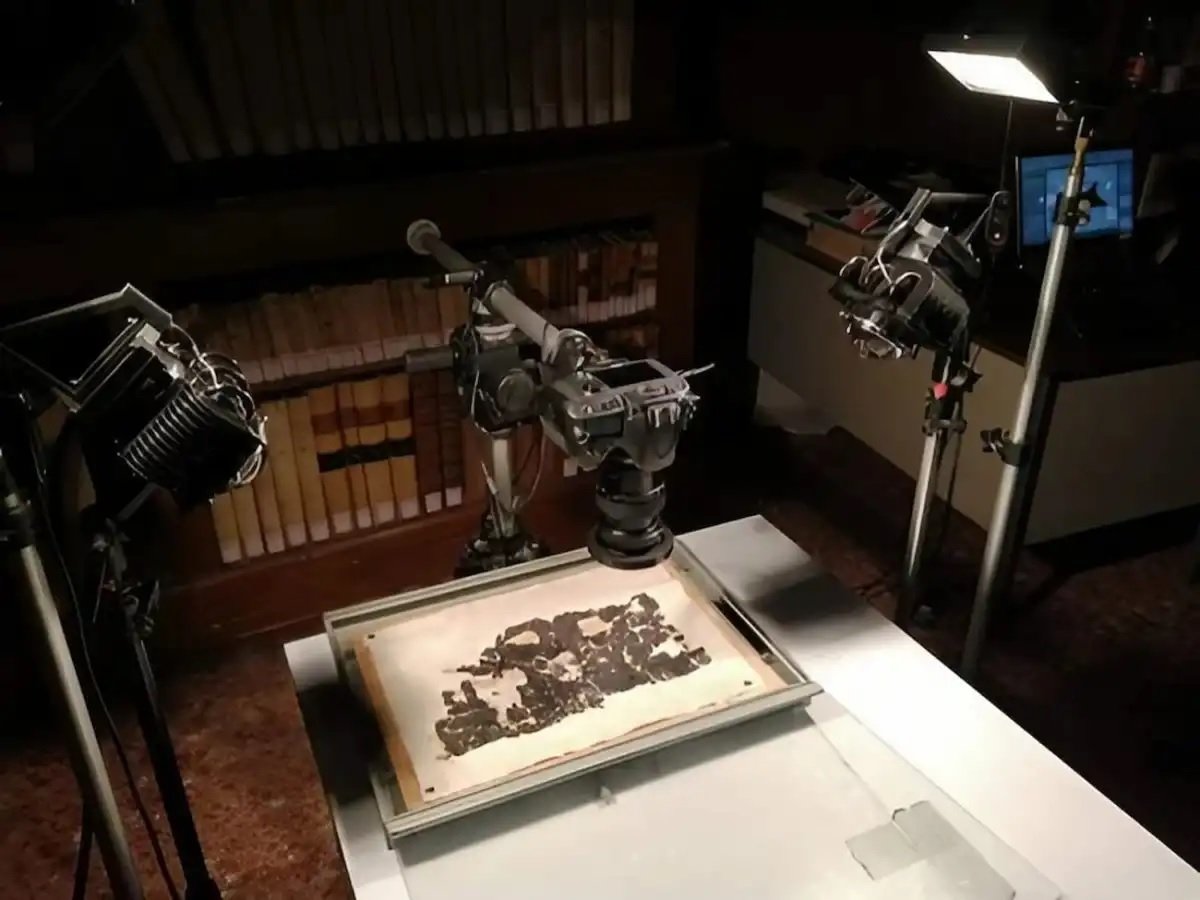An analysis of carbonised papyrus from the Roman town of Herculaneum has revealed the burial place of Plato.
Plato (427 – 348 BC), was an ancient Greek philosopher of the Classical period and taught the doctrines that would later become known as Platonism.
Plato’s most famous contribution is the theory of forms (or ideas), which has been interpreted as advancing a solution to what is now known as the problem of universals.
The scroll is one of many examples recovered at Herculaneum, a Roman town in the present-day comune of Ercolano in South-West Italy.
Along with the nearby city of Pompeii, Herculaneum was destroyed during the volcanic eruption of Mount Vesuvius in AD 79, burying the town under thick layers of ash and pumice.

Numerous scrolls and parchments made from papyrus were carbonised under the intense heat, however, as part of an ongoing project by archaeologists, a scroll containing the History of the Academy of Philodemus of Gadara (110-40 BC) has been partially deciphered.
The team used modern imaging techniques such as infrared, ultraviolet optical imaging, molecular and elemental imaging, thermal imaging, tomography, and optical microscopy digital.
Approximately 1,000 words have been identified (around 30% of the text entirety) which includes new details about Plato, the development of his Platonic Academy, and information that identifies his place of burial.
Archaeologists already knew that Plato was buried somewhere in the Platonic School in Athens, however, this latest revelation has pinpointed his burial to a private garden near the so-called Museion or sacellum sacred to the Muses.
Furthermore, the text has revealed that Plato was sold as a slave following the conquest of the island of Aegina by the Spartans sometime around 404 BC to 399 BC.
Header Image Credit : CNR – Image Credit : iStock
Sources : CNR – Consiglio Nazionale delle Ricerchenrc





